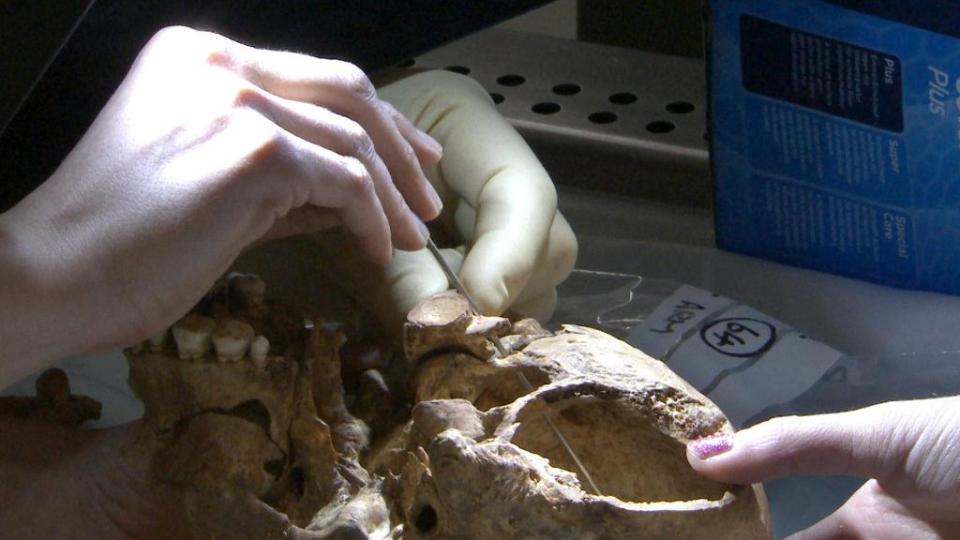 Rob Waugh
Rob WaughForensic expert reveals how King Richard III actually died
Body from 1485 yields its secrets to Home Office forensic pathologist
When King Richard III's body was found on the site of a car park in Leicester, it marked the start of the ultimate 'cold case' investigation.
Using cutting-edge forensic techniques, a University of Leicester expert (and trained forensic pathologist) found three distinctive wounds which allowed him an insight into the King's last moments at the Battle of Bosworth Field in 1485.
Markings on King Richard's vertebra and skull showed that the murderous usurper had come to a very bloody end.

King Richard was killed by a sword thrust up into his head from below, so violent it went right through his brain and marked the other side of his skull.
'The key to this sequence is that alongside my role at the University of Leicester, I am a Home office forensic pathologist,’ said Guy Rutty of the University of Leicester.
‘Thus I was able to look at the large injury in the base of the skull and, through experience, I was able to identify the key injury.’
[ New contact lenses allow wearers to zoom in and out ]
“Using the specialist lighting equipment we have in the forensic mortuary at the Leicester Royal Infirmary, which was key to the examination, I then was able to put the three injuries together on pathological grounds and we all realized I had identified the potential lethal injury to King Richard III.’
The wound was one of several severe injuries on Richard’s body - including three potentially fatal injuries - and hints that the king had removed his helmet, or lost it in battle, before he was finally killed.
[ Facebook 'Legacy Contact' can take over when you die ]
‘Following the identification of a major sharp force trauma to the base of the skull, which was probably inflicted by a sword or the top spike of a bill or halberd, we were interested to determine the angle of the blow,’ said the University’s Jo Appleby.
[ New smartphone app tells you if you have cancer ]
‘During filming, Professor Rutty noted a small traumatic lesion on the interior surface of the cranium, directly opposite the sharp force trauma.
‘Careful examination showed that the two injuries lined up with one another, and also with an injury to Richard’s first cervical vertebra.’
‘The combination of all three injuries provided evidence for the direction of the injury and also the depth to which the weapon had penetrated the skull.’

 Yahoo News
Yahoo News 